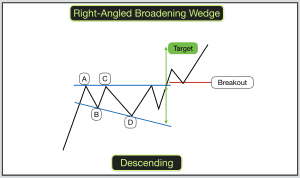


Stop loss: The stop is placed above/below the last lowest/highest point that has just been reached Stop loss: The stop loss is placed above the supportĭisadvantage: Bearish breaks cause less movement than bullish breaksĮntry: Take a long position in contact with the support and short position in contact with the resistance Objective: Theoretical objective of the patternĪdvantage: High probability of trade successĮntry: Take a short position at the break in the resistance from the 5th or 6th rotation, if the price is in the lower third of its annual range. Stop loss: The stop loss is placed under the resistance From the 6th rotation onwards, this percentage rises to 96%.Įntry: Take a long position at the break in the resistance from the 5th or 6th rotation, if the price is in the upper third of its annual range. 5 contact points on either the resistance or the support), there is an 80% chance that the exit will occur at the next contact with the symmetrical triangle’s support or the resistance lines. The movement is greater when exiting upwards No bullish breaks are found in the lower third of the value's annual range More than 72% of bullish exits occur when the price is in the upper third of its annual range. In the event of a bearish exit, the percentage drops to 64%. In 75% of cases, the objective of the pattern is achieved by using the technique of the maximum height of the triangle. In 53% of cases, there is a bullish exit Here are some statistics about broadening tops: Graphical representation of a broadening top Another technique consists in plotting the maximum height of the triangle at the break out point. The price objective is given by plotting the top point of the triangle at its start where it breaks out. However, buying pressure remains strong and enables the formation of higher and higher highest points. This pattern is often due to numerous traders taking profits that leads to the lowest point formations. The formation of this pattern has to be preceded by a bullish movement. If the chart pattern is not spotted quickly, the movements may appear totally random and thus trap many investors. The broadening top reflects the growing nervousness of investors and also their indecision. Each line must be touched at least twice to be validated. The oscillations between the two triangle terminals are therefore becoming increasingly large. It is therefore a reverse symmetrical triangle. The pattern is formed by two divergent lines which are horizontally symmetric. A broadening top is a bullish reversal pattern.


 0 kommentar(er)
0 kommentar(er)
